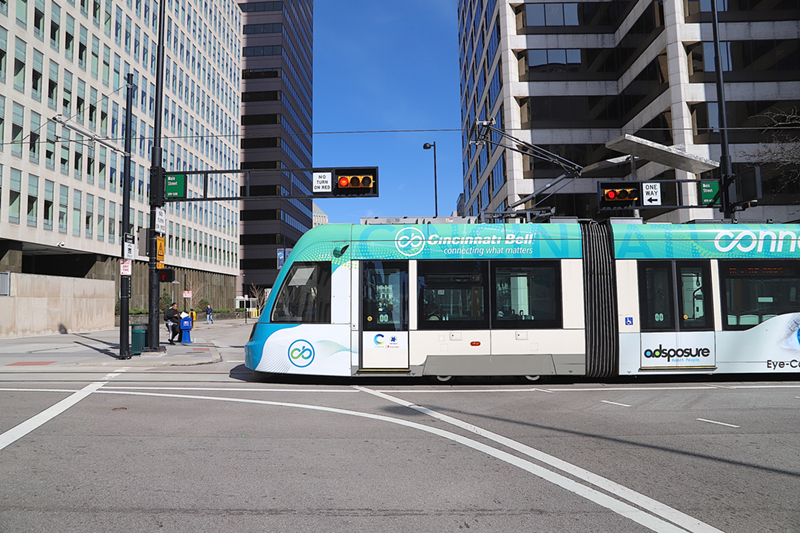Cincinnati's streetcar faces another operating deficit next year, city budget documents show — one bigger than its reserve account alone can bridge.
According to the operating fund projection provided by the Southwest Ohio Regional Transit Authority to the city, the streetcar will be in the red in the coming fiscal year due to rising costs and lagging revenues.
The overall deficit is projected at $1.36 million in the budget document, but $444,000 in coming revenue SORTA expects from advertising at streetcar stations would winnow that down to $916,000.
That's still a big gap partly driven by costs associated with operating the streetcar, which are expected to increase from the $3.9 million approved last year to $4.4 million projected for the coming fiscal year.
Meanwhile, farebox revenue dropped from $444,789 in fiscal year 2018 to $406,138 in FY 2019. Next fiscal year, which starts July 1, farebox revenue is budgeted at $323,834.
The streetcar's ridership has been somewhat unpredictable. In April, the 3.6-mile rail loop through downtown and Over-the-Rhine saw 36,000 riders. That's well below the roughly 50,000 riders in April 2017, though about in line with ridership in April last year. In March, the streetcar saw about 35,000 rides, missing its budgeted ridership by 1,773 riders. But in February, the almost 25,000 times people rode the streetcar exceeded budgeted ridership by more than 2,000 rides. In January, the streetcar exceeded its budgeted ridership by more than 3,000 rides. In both of those months, ridership increased over the same time the year prior.
All of those numbers, however, are much smaller than the 3,200 riders per day consultants in 2011 told the city the streetcar could expect.
The streetcar last year ran a deficit of $635,458 and in 2018 ran a deficit of $883,000. But a surplus fund helped cover those overages. The fund has just $684,997 in it now — not enough to cover the projected shortfall, even with the expected station advertising revenue.
The streetcar also gets $1.5 million in operating funding from parking meter revenue, $900,000 a year from the Haile Foundation and money from an arrangement called Voluntary Tax Incentive Contribution Agreements, which ask developers in downtown and Over-the-Rhine to contribute to streetcar operations a portion of money they save due to tax abatements. Revenue from that fund is expected to jump to $340,000 in the coming year — up from $130,000 this year and $36,000 in fiscal year 2018. That's still less than what the city projected — it expected to get $524,000 from VTICA in the current budget, for example.
There are, of course, political implications for the funding gap. Opponents of the project have been vocal about its underwhelming ridership and budget deficits.
It's unclear where money to bridge the gap will come from. Cincinnati City Manager Patrick Duhaney indicated to Cincinnati City Council that he will have a proposal to balance the streetcar's budget by the end of the month. Some on council, however, have pledged that city money won't be the way it gets there.
"There will be no taxpayer bailout of the streetcar on my watch," Republican council member Jeff Pastor tweeted yesterday.
Supporters, however, argue that transit projects are rarely self-sustaining and that the public subsidy is worth the investment. Streetcar boosters point to development sparked in downtown and OTR that they say came at least in part due to the project.






